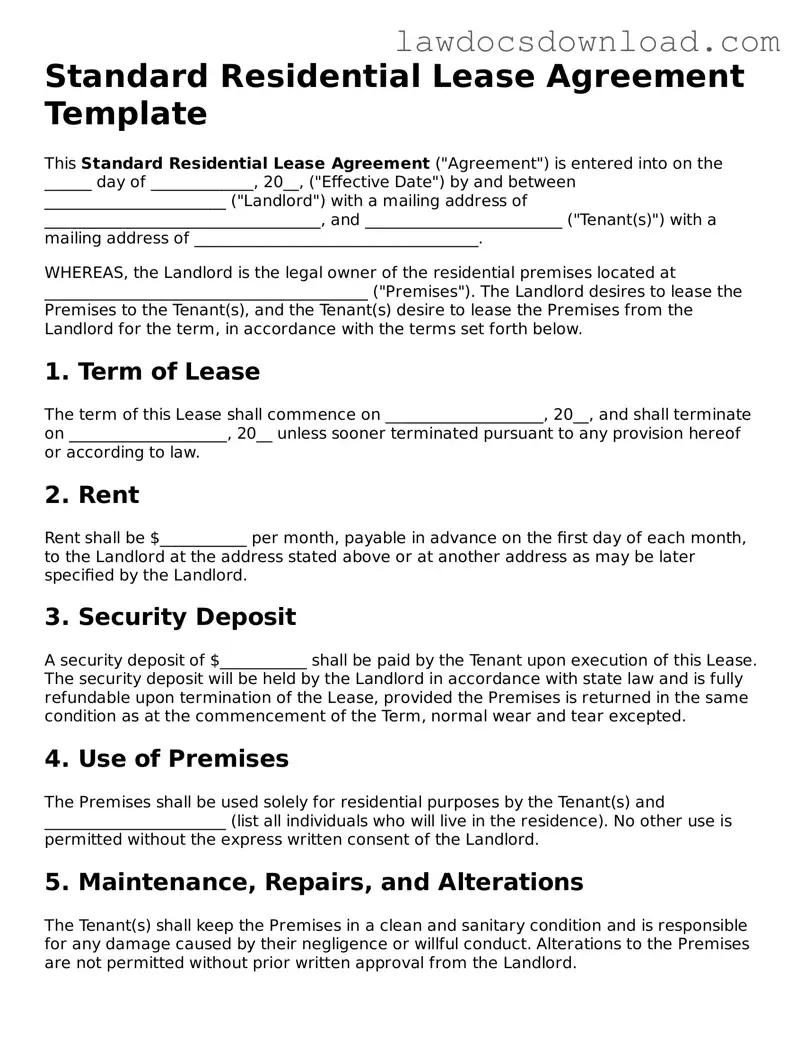Standard Residential Lease Agreement Template
This Standard Residential Lease Agreement ("Agreement") is entered into on the ______ day of _____________, 20__, ("Effective Date") by and between _______________________ ("Landlord") with a mailing address of ___________________________________, and _________________________ ("Tenant(s)") with a mailing address of ____________________________________.
WHEREAS, the Landlord is the legal owner of the residential premises located at _________________________________________ ("Premises"). The Landlord desires to lease the Premises to the Tenant(s), and the Tenant(s) desire to lease the Premises from the Landlord for the term, in accordance with the terms set forth below.
1. Term of Lease
The term of this Lease shall commence on ____________________, 20__, and shall terminate on ____________________, 20__ unless sooner terminated pursuant to any provision hereof or according to law.
2. Rent
Rent shall be $___________ per month, payable in advance on the first day of each month, to the Landlord at the address stated above or at another address as may be later specified by the Landlord.
3. Security Deposit
A security deposit of $___________ shall be paid by the Tenant upon execution of this Lease. The security deposit will be held by the Landlord in accordance with state law and is fully refundable upon termination of the Lease, provided the Premises is returned in the same condition as at the commencement of the Term, normal wear and tear excepted.
4. Use of Premises
The Premises shall be used solely for residential purposes by the Tenant(s) and _______________________ (list all individuals who will live in the residence). No other use is permitted without the express written consent of the Landlord.
5. Maintenance, Repairs, and Alterations
The Tenant(s) shall keep the Premises in a clean and sanitary condition and is responsible for any damage caused by their negligence or willful conduct. Alterations to the Premises are not permitted without prior written approval from the Landlord.
6. Governing Law
This Agreement shall be governed by and construed in accordance with the laws of the state in which the Premises is located.
7. Entire Agreement
This Agreement constitutes the entire agreement between the parties and supersedes all prior understandings or agreements on the subject matter hereof. Any amendments to this Agreement must be in writing and signed by both parties.
Signatures
IN WITNESS WHEREOF, the parties have executed this Standard Residential Lease Agreement on the date first above written.
Landlord's Signature: _______________________________ Date: ______________
Tenant's Signature: _________________________________ Date: ______________
